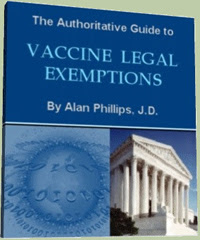Lisa Garber
Activist Post
A researcher in Vancouver found that vaccinated subjects in an animal study displayed worsened H1N1 symptoms and became much sicker when exposed to the H1N1 virus.
Dr. Danuta Skowronski is an influenza expert at the British Columbia Centre for Disease Control. She showed her findings at the Interscience Conference on Antimicrobial Agents and Chemotherapy in San Francisco.
Curious thing is: this isn’t the first time that Skowronski observed this so-called “Canadian problem.” During the 2009 flu pandemic, Skowronski noticed that individuals who received the 2008-2009 winter flu shot were more likely to become infected with the virus than were those who hadn’t been given the shot. Five studies were conducted in various provinces, but because research outside Canada failed to compare, the matter went ignored.
Skowronski persisted and conducted a blind study with 32 ferrets. Researchers didn’t know which animals had been vaccinated and which had not when they exposed them to the H1N1 virus. While all the animals recovered, those that had been vaccinated showed worsened H1N1 symptoms than those that hadn’t.
The findings were consistent with the increased risk that we saw in the human studies, Skowronski added, although she doesn’t yet know why.
Some H1N1 symptoms include:
Vaccines Ineffective, Even Harmful
In a study published in The Lancet, 2.7 percent of over 13,000 unvaccinated adults while 1.2 percent of vaccinated adults caught the influenza virus. That means that the vaccine prevented 1.5 of every 100 adults from getting sick—a far cry from the 60% efficacy claim the media touts.
While we may be inclined to believe that all of us getting vaccinated is enough if we prevent those 3 of every 200 people from getting sick, vaccines are often chock-full of harmful ingredients—ingredients that might get us sicker than the illness itself. In example, studies conducted in 1999 showed that MMR, hepatitis B, and other multi-dose vaccines contained thimerosal in amounts that exposed 62.5 ug of mercury per child, per visit to the doctor. That’s 100 times the “safe” dose as determined by the Federal Environmental Protection Guidelines. Other chemicals found in flu vaccines include:
- Aluminum, a neurotoxin linked to Alzheimer’s disease
- Formaldehyde, a carcinogen
- Various types of antibiotics
Moreover, in 2010, the U.S. government admitted a link between the H1N1 seasonal flu vaccine and Guillain-Barre Syndrome, a deadly nerve disease. Although this link had been revealed quite some time ago, a friendly government reminder helps us to remember the possibilities of H1N1 vaccine side effects and overall possible damage from vaccines.
Professor Elizabeth Miller, head of the HPA’s immunization department, said the connection was made in the 1970s and use of it desisted—for a time, until potential profits became too big to ignore.
Additional Sources:
Vancouver Sun
Explore More:
- H1N1 Vaccine Side Effects – The Link to Deadly Nerve Disease Risk
- Study Says H1N1 No Threat this Year While H1N1 Vaccine Admittedly Linked to Deadly Disease
- Flu Scare Fails as Public Opposes New Mega H1N1 Loaded Vaccine
- H1N1 Vaccine Increases Narcolepsy by 660 Percent
- More People Refusing Flu Shot this Year as Opposition Grows Worldwide
- 3 Reasons to Reconsider Flu Shots
This article first appeared at Natural Society, an excellent resource for health news and vaccine information.




Be the first to comment on "Flu Shot Worsens H1N1 Symptoms, New Research Reveals"